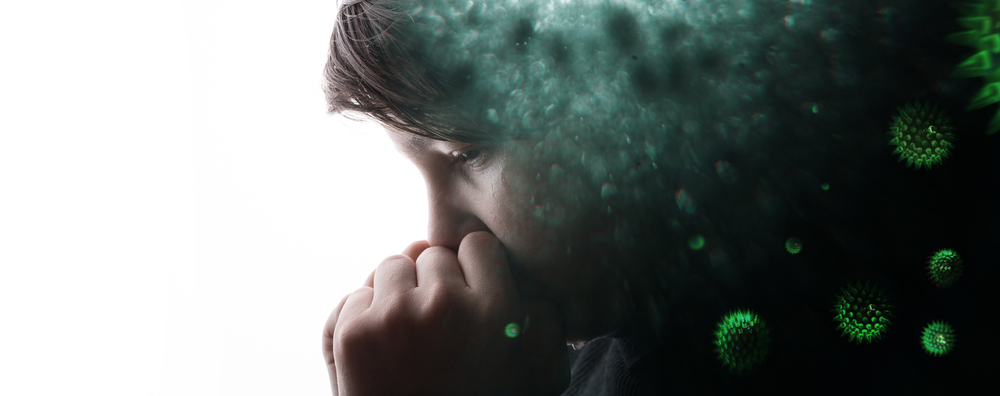
KDdesignphoto/Shutterstock
.
Right now I’m almost sure that there is a 14- or 15-year-old crying from inside a jail cell at the Cook County [Ill.] Juvenile Temporary Detention Center (CCJTDC) — home of the world’s first juvenile court house established in 1899. There are many reasons this young person could be crying — they can’t have their mother come and visit as she has every week for the last few months. Maybe the young person was sure they were going to court but is told the courts that have the ability to free them is closed for 30 days. Or maybe, just maybe, the young person is sick from the contracting the coronavirus (COVID-19).
On any given day at the CCJTDC there are boys and girls who will be herded into the CCJTDC through the intake process and thereafter placed inside a “housing pod” — a space less than the size of a full basketball court with 12 to 15 youth locked inside. There are 30 of these housing pods inside the CCJTDC — a four-story concrete and iron building on Chicago’s Westside.

Paul Pearson
Dr. Anne Spaulding, a professor of epidemiology and medicine at Emory University, was quoted in the Los Angeles Times as saying, “There’s nothing to make us think that a COVID-19 cannot spread through a crowded juvenile facility as quickly as it could spread through a cruise ship.” The Centers for Disease Control and Prevention reports that the virus can easily spread in dense places — in a packed subway car, for example, or at a rally or concert.
There is now mounting concern that COVID-19 will find its way inside our correctional facilities. This claim is not hyperbole, according to an article in The Hill: “An employee at New York’s Sing Sing Correctional Facility tested positive for the coronavirus … with two other’s tests pending.” A staffer at Monroe Correctional Complex in Washington state has tested positive.
And finally there is Dr. Robert Greifinger, “who has spent 25 years working on health care issues inside the nation’s prisons and jails.” Social distancing “isn’t so simple behind bars … crowding issues, ventilation issues, security issues where people have to be checked and monitored fairly frequently.”
In response to the mounting evidence that detention facilities are the next breeding ground for the pandemic, the chief justice of the CCJTDC postponed most cases through April 15.
Survived so much already
These preventative measures, however well intended, will continue to put lives at risk — young lives — many of whom have made it through drug and gun wars, physical and sexual abuse, and mental and emotional abuses of every kind and survived. What no one with authority is willing to concede at this point is that social distancing needs to apply to youth detention centers right now.
COVID-19 is like no other issue the courts or detention centers have seen before. Thousands of young people are at risk as they sit inside a cesspool detention facility waiting to be infected. Here we have no other choice and must call for the lifesaving measure on behalf of our detained youth.
It is asinine that law and order has taken precedence over common sense. With the introduction of COVID-19 into the global lexicon we are also become increasingly aware of the term “social distancing.” Extraordinary precautions are being taken by our government leadership and agencies to ensure that as many people practice social distancing as possible.
The business community has also stepped in to help combat COVID-19 concerns by facilitating remote work options for employees and closing brick and mortar locations until further notice. Even our schools, administrators, faculty and staff at every level of education across the nation are not exempt from the impacts of social distancing due to COVID-19.
In our lifetimes most of us have never experienced anything similar to the health precautions taken to curtail the spread of COVID-19. This is of particular interest to those of us who advocate and lend voice for detained youth who are experiencing forms of marginalization and systemic trauma.
There is an interest divergence occurring here where property takes priority over social distancing that can curtail the spread of COVID-19 and impact the wellbeing of us all. (Juvenile detention is “not considered appropriate for status offenders and youth” who commit technical probation violations. But almost 4,000 youth are held in Cook County detention centers for these same low-level offenses.) Thus the approximately 200 boys and girls are essentially waiting for COVID-19 to find its way into the CCJTDC. Maybe some young person arrested for stealing or fighting will bring in COVID-19?
Maybe some correctional officer will bring COVID-19 into the space? Maybe even a judge will usher in COVID-19? I can’t be sure which of these options will take hold. What I am absolutely sure of is that COVID-19 will enter the CCJTDC. So let’s find practical solutions to make sure our kids aren’t there when it arrives.
Paul Pearson is a Doctor of Education student at DePaul University, where he also received a Masters of Jurisprudence degree in public interest law with a focus on juvenile jurisprudence. He is also the founder of a volunteer organization, DuSable Community Coalition, focused on reducing recidivism as we find alternatives to youth detainment throughout the United States.































